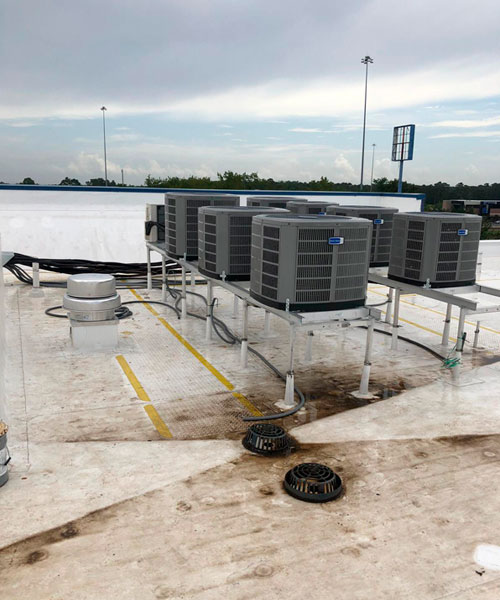Choosing the right air conditioning system can significantly impact your energy bills and overall comfort. With a plethora of options available, it’s essential to understand the differences between various types of air conditioners to make an informed decision. This article will delve into the most efficient and economical air conditioning options, particularly focusing on aircon for apartments and multi-family HVAC systems.
Understanding efficiency and economy
Efficiency in an air conditioner refers to its ability to convert electrical energy into cooling power. The higher the efficiency, the less energy is consumed to achieve the desired temperature. Economy, on the other hand, relates to both the initial purchase cost and the long-term operating expenses.
Types of air conditioners
Window units
Simple and affordable, but often less efficient due to their design;
Ideal for small rooms or as a temporary solution;
Noisy compared to other options.
Portable air conditioners
Versatile and easy to move from room to room;
Typically less efficient than window units due to smaller capacities;
Require venting to the outside.
Split systems
Consist of an indoor and outdoor unit, connected by refrigerant lines;
More efficient than window or portable units;
Offer better air quality and noise reduction;
Ideal for apartments and small homes.
Ductless mini-split systems
Similar to split systems but with multiple indoor units connected to a single outdoor unit;
Highly efficient and customizable;
Perfect for multi-family HVAC systems and zoned cooling.
Central air conditioning: A whole-house system that cools an entire building through a ductwork system;
Highly efficient when sized correctly;
Best suited for larger homes and multi-family HVAC applications.
Want to know more about the ideal type and model of aircon for apartments for you? Consult New Season and discover the advantages of counting on the experience and excellent work of a brand that is designed for you!
Efficiency features to look for
The SEER rating measures the cooling efficiency of an air conditioner, with higher SEER values indicating greater energy efficiency. Inverter technology further enhances efficiency by allowing the compressor to adjust its speed based on the cooling demand, reducing energy waste. Additionally, smart features like thermostats and sensors can optimize the air conditioner’s performance, ensuring it only uses the necessary amount of energy, which helps lower overall consumption.
Choosing the best option for apartments and multi-family buildings
Apartments: Split systems and ductless mini-split systems are popular choices for apartments due to their efficiency, quiet operation, and ability to cool individual rooms.
Multi-family HVAC: Central air conditioning and ductless mini-split systems are well-suited for multi-family HVAC applications. Central systems offer efficient cooling for entire buildings, while ductless mini-split systems provide flexibility and zoned cooling.
When selecting an air conditioner, it’s essential to consider factors such as the size of the space, your budget, and desired level of comfort. While initial costs may vary, investing in a high-efficiency system can lead to significant long-term savings on energy bills. By understanding the different types of air conditioners and their features, you can make an informed decision that best suits your needs.
Discover the best that the market has to offer for multi-family HVAC with New Season, a market reference when it comes to quality air conditioning for your home or business. Contact us and find out how we can help you today!
